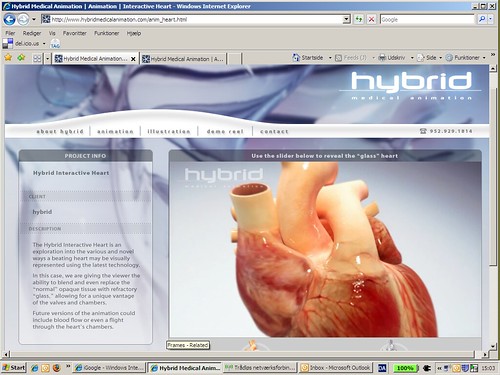We have repeatedly come back to the art of medical animation on this blog. Although in principle we are more interested in animation of invisible biomedical microstructures, animations of classical macroanatomical structures are still a source of awe and fascination, especially when they are well-done. See, for example, this beautiful animation of a human heart:

One thing is that it has an almost haptic quality — another bonus feature is that you can move an interface slider to seamlessly disclose the working of the valves beneath the increasingly transparent muscular ‘glass’ surface. Nifty! Imagine an exhibition room in which a real, preserved heart was shown with this animation in the background. (I don’t think they used any of these in the Wellcome Collection’s Heart-exhbition?).
The interactive heart is produced by Hybrid Medical Animation,  a small Minneapolis-based company which specialises in creative medical and scientific imaging. And they don’t restrict their productions to macroanatomy; for example, they have also done instruction movies about molecular targeting, like the one to the right.
a small Minneapolis-based company which specialises in creative medical and scientific imaging. And they don’t restrict their productions to macroanatomy; for example, they have also done instruction movies about molecular targeting, like the one to the right.
See more examples here.
(thanks to today’s Medgadget for the tip)
The near-haptic quality of a heart animation
We have repeatedly come back to the art of medical animation on this blog. Although in principle we are more interested in animation of invisible biomedical microstructures, animations of classical macroanatomical structures are still a source of awe and fascination, especially when they are well-done. See, for example, this beautiful animation of a human heart: One thing is that it has an almost haptic quality […]


